29+ Counter Argument Examples to Download
In the realm of persuasive writing, crafting a strong argument is essential to sway the audience’s perspective. However, to truly excel in the art of rhetoric, one must also be adept at presenting counterarguments. In this article, we will delve into the intricacies of counter-arguments, exploring their definition, step-by-step guide, and addressing frequently asked questions. Whether you’re an aspiring writer or seeking to enhance your argumentative skills, this comprehensive resource will equip you with the necessary tools to construct compelling counter-arguments.
1. Argumentative Essay Example
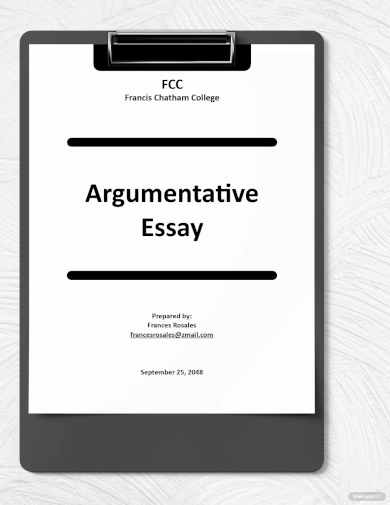
2. Simple Argumentative Essay Example

stu.ca
3. Counter Argument Essay Example
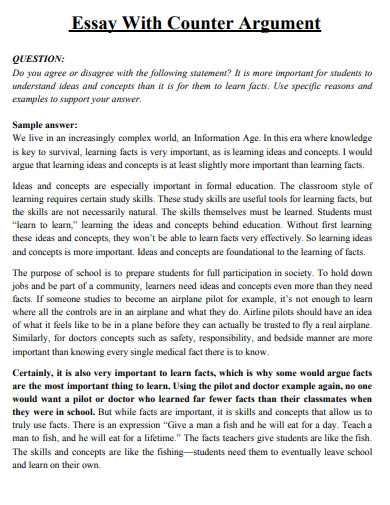
s3.amazonaws.com
4. Persuasive Essay Example

/webs.um.es
5. Counter Argument Outline Example
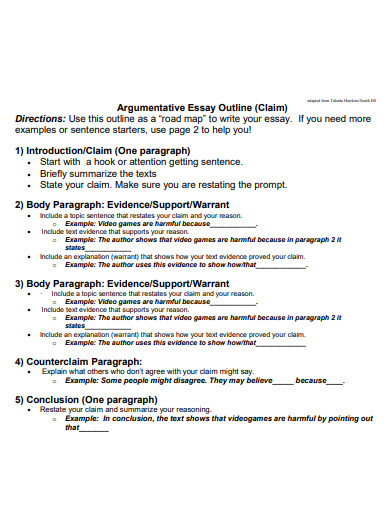
ccsoh.us
6. Counter Argument Rebuttal Example
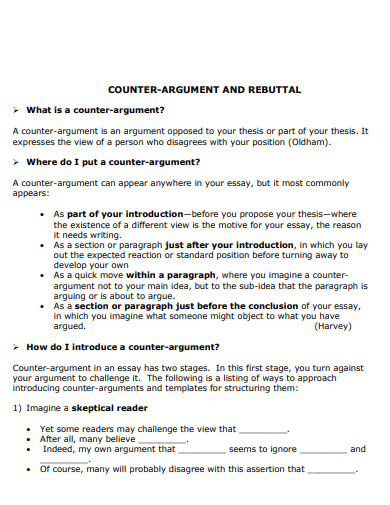
cabrini.edu
7. Counter Argument Paragraph Example
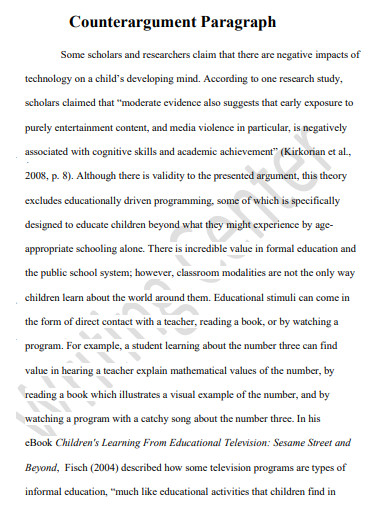
content.bridgepointeducation.com
8. Counter Argument Starters Example
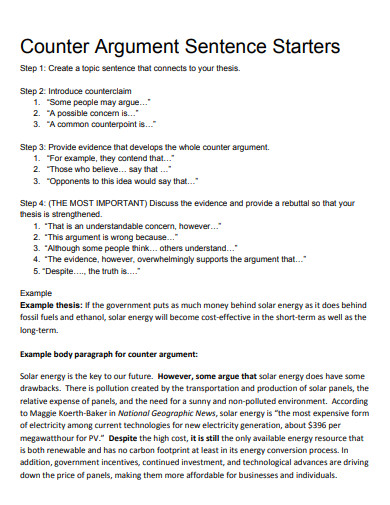
wcpss.instructure.com
9. Counter Argument Concession Example
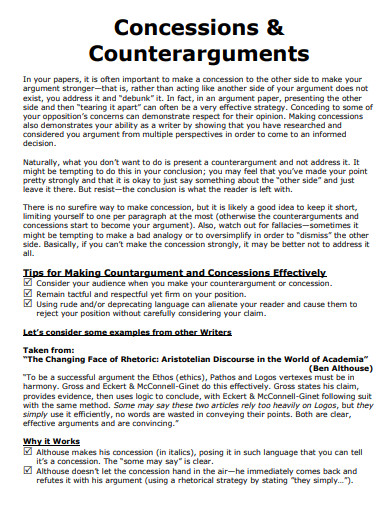
depts.washington.edu
10. Counter Argument Debate Example
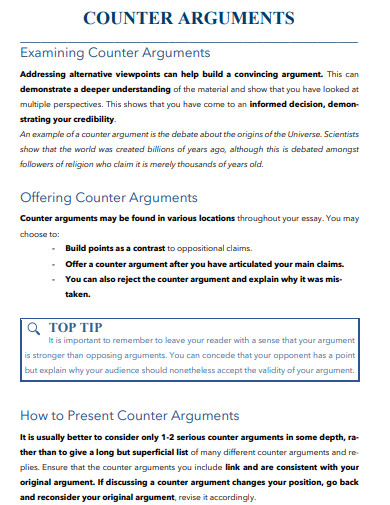
ucc.ie
11. Position Paper Example
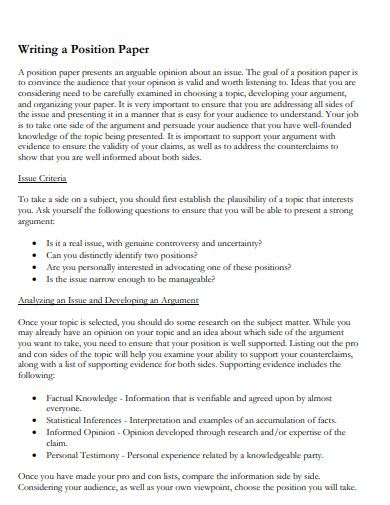
people.cs.rutgers.edu
12. Counter Argument Transition Example

eslflow.com
13. Counter Argument Research Paper Example

cccti.edu
14. Counter Argument Thesis Statement Example
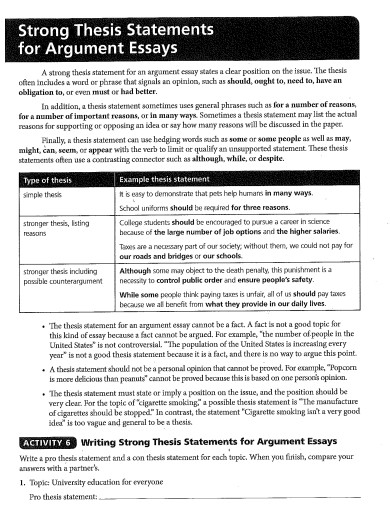
luc.edu
15. Counter Argument Essay Structure Example

westernsydney.edu.au
16. Counter Argument Opinion Essay Example
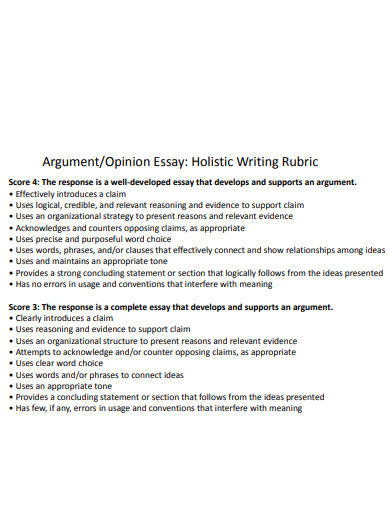
wvde.state.wv.us
17. Counter Argument Synthesis Essay Example
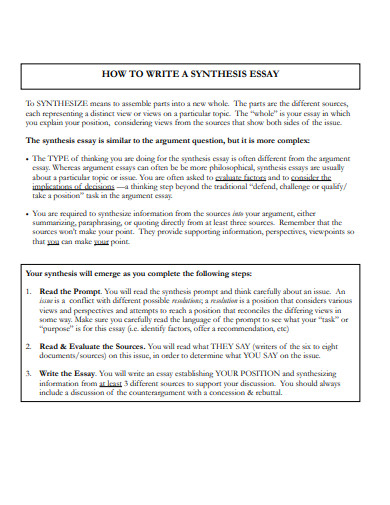
cusd80.com
18. Counter Argument Writing Example
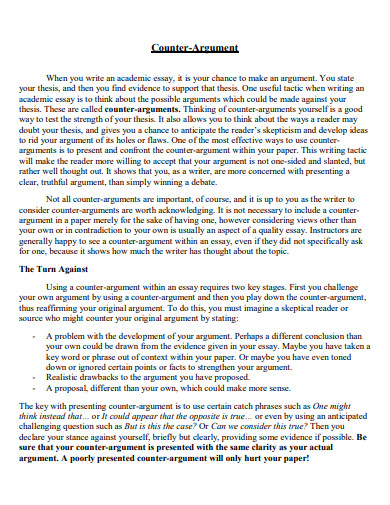
manasquanschools.org
19. Counter Argument Social Media Example
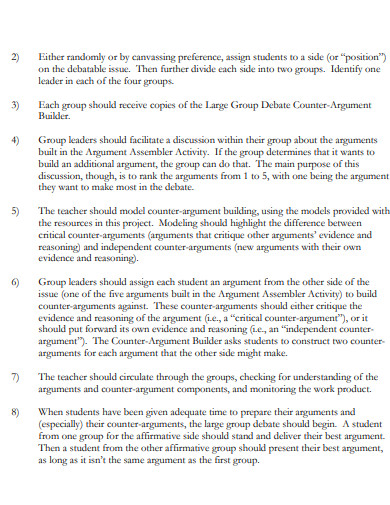
argumentcenterededucation.com
20. Counter Argument Counterclaim Example
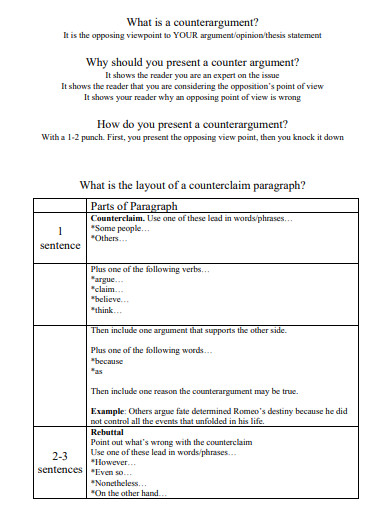
coppinacademy.org
21. Counter Argument Format
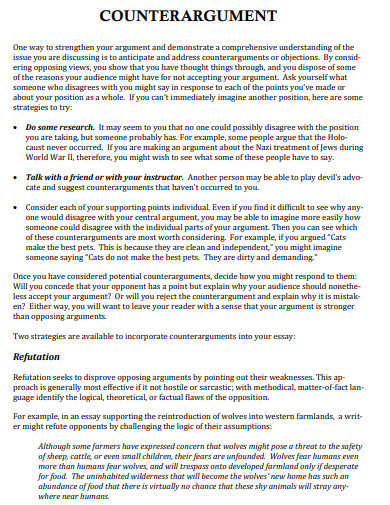
writingcenter.mst.edu
22. Teaching Counter Argument Example
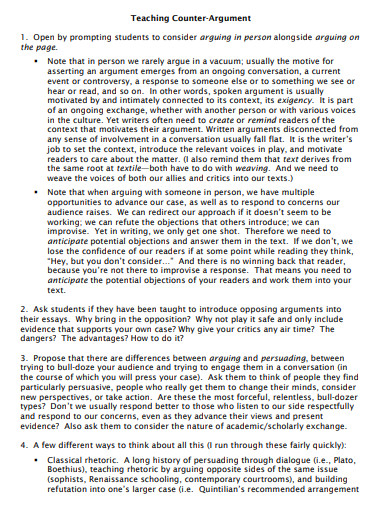
haverford.edu
23. Counter Argument Example
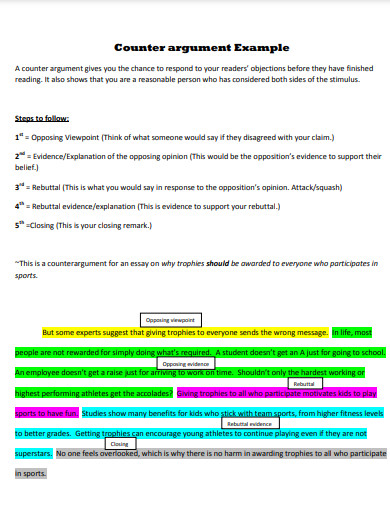
stcharles.k12.la.us
24. Counter Argument Refutation Example
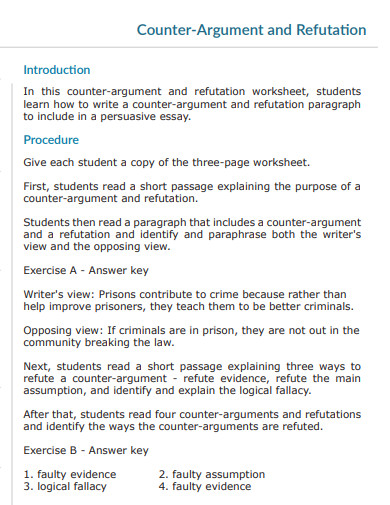
teach-this.com
25. Counter Argument Activity Example
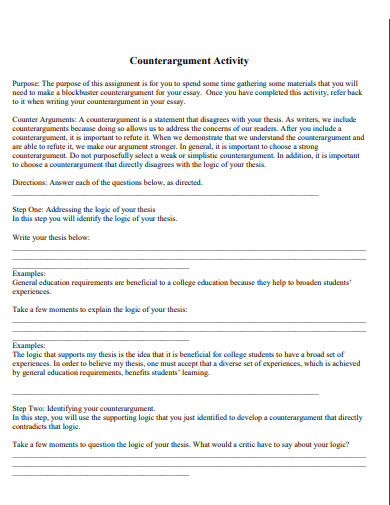
cuyamaca.edu
26. Simple Counter Argument Example
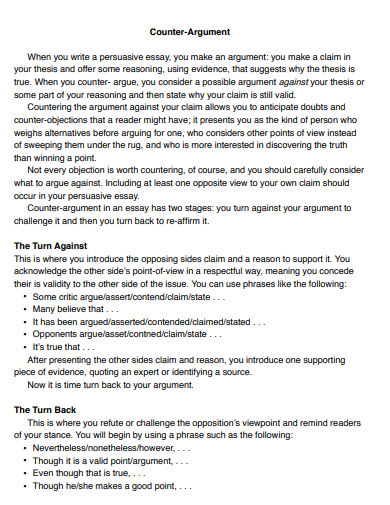
mrpageweho.weebly.com
27. Counter Argument Worksheet Example
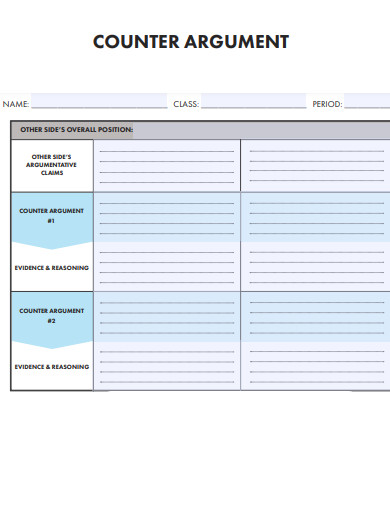
argumentcenterededucation.com
28. Printable Counter Argument Example
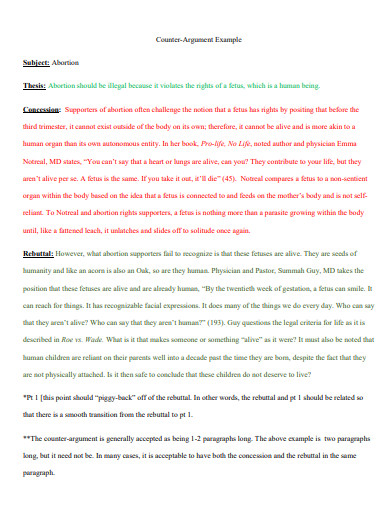
sastracha.files.wordpress.com
29. Counter Argument Conclusion Example
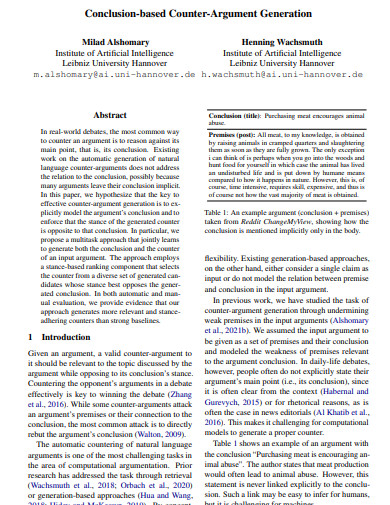
aclanthology.org
30. Counter Argument in PDF
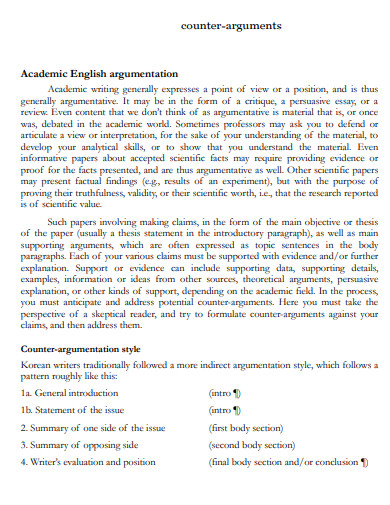
profrush.files.wordpress.com
What is a Counter Argument?
A counter-argument, often employed in an argument essay, is a powerful literary device used to challenge and refute opposing viewpoints. It serves as a potent means to anticipate and address potential objections that may arise in the minds of the audience. By acknowledging alternative perspectives and presenting well-reasoned counterpoints, writers can strengthen their own argument, adding depth and credibility to their discourse. Effective counterarguments showcase the writer’s ability to analyze multiple angles, fostering a more comprehensive understanding of the topic at hand.
How to Write a Counter Argument
Mastering the skill of crafting compelling counter-arguments requires a systematic approach. By following these steps, you can effectively incorporate counter-arguments into your writing, elevating the overall impact of your work.
Step 1: Thoroughly Understand Your Audience and Opposing Viewpoints
Before constructing a counter argument, it is imperative to familiarize yourself with your audience’s beliefs, values, and concerns. Analyze opposing viewpoints to identify the most compelling arguments against your own stance. By gaining a deep understanding of the opposing side, you can tailor your counter argument to resonate with the target audience.
Step 2: Choose the Most Potent Counterpoints
Select the strongest counterpoints that challenge your own argument. Look for weaknesses, inconsistencies, or evidence that contradicts your position. By choosing compelling counterpoints, you demonstrate your ability to engage with diverse perspectives and effectively address potential objections.
Step 3: Present Evidence and Support
Once you have identified the key counterpoints, substantiate your own argument with evidence and support that refutes the opposition. Utilize various persuasive techniques, such as analogies, understatement, or anecdotes, to bolster your counterargument and enhance its persuasiveness.
Step 4: Structure Your Counter Argument
Organize your counter-argument in a clear and logical manner, following an outline format. Present each counterpoint concisely and follow it with a well-reasoned rebuttal. By employing a coherent text structure, you ensure that your counterargument flows seamlessly within the overall framework of your writing.
FAQs
How can counter arguments strengthen my overall argument?
Counter arguments introduce an element of intellectual rigor into your writing. By acknowledging and addressing opposing viewpoints, you demonstrate a thorough understanding of the topic, engendering trust and credibility in your audience. Furthermore, counter arguments provide an opportunity to preemptively address potential objections, making your argument more robust and persuasive.
Is it necessary to present counter arguments in every piece of writing?
While counter arguments can greatly enhance the quality of your writing, their inclusion is not mandatory for every piece. Consider the context, purpose, and audience of your work. If you anticipate significant opposition or if exploring alternative perspectives is crucial for the topic, incorporating counter-arguments becomes paramount.
Are there any effective techniques to make counter-arguments more persuasive?
To make your counter-arguments more persuasive, employ various rhetorical techniques such as appealing to emotions, presenting compelling evidence, or utilizing powerful language. Additionally, employing rhetorical devices like analogies, understatement, or anecdotes can add depth and impact to your counterargument, capturing the attention and interest of your readers.
In the realm of persuasive writing, mastering the art of counter-arguments is an indispensable skill. By diligently crafting and skillfully presenting counterpoints, writers can engage with opposing viewpoints and strengthen their overall argument. Through a strategic approach, understanding the target audience, and employing persuasive techniques, your counter-arguments will not only refute opposing perspectives but also enrich the discourse, making your writing more compelling and thought-provoking. So click here for 10+ short argumentative essay examples and explore 5+ argumentative essay examples for students, expanding your repertoire of persuasive writing strategies.


